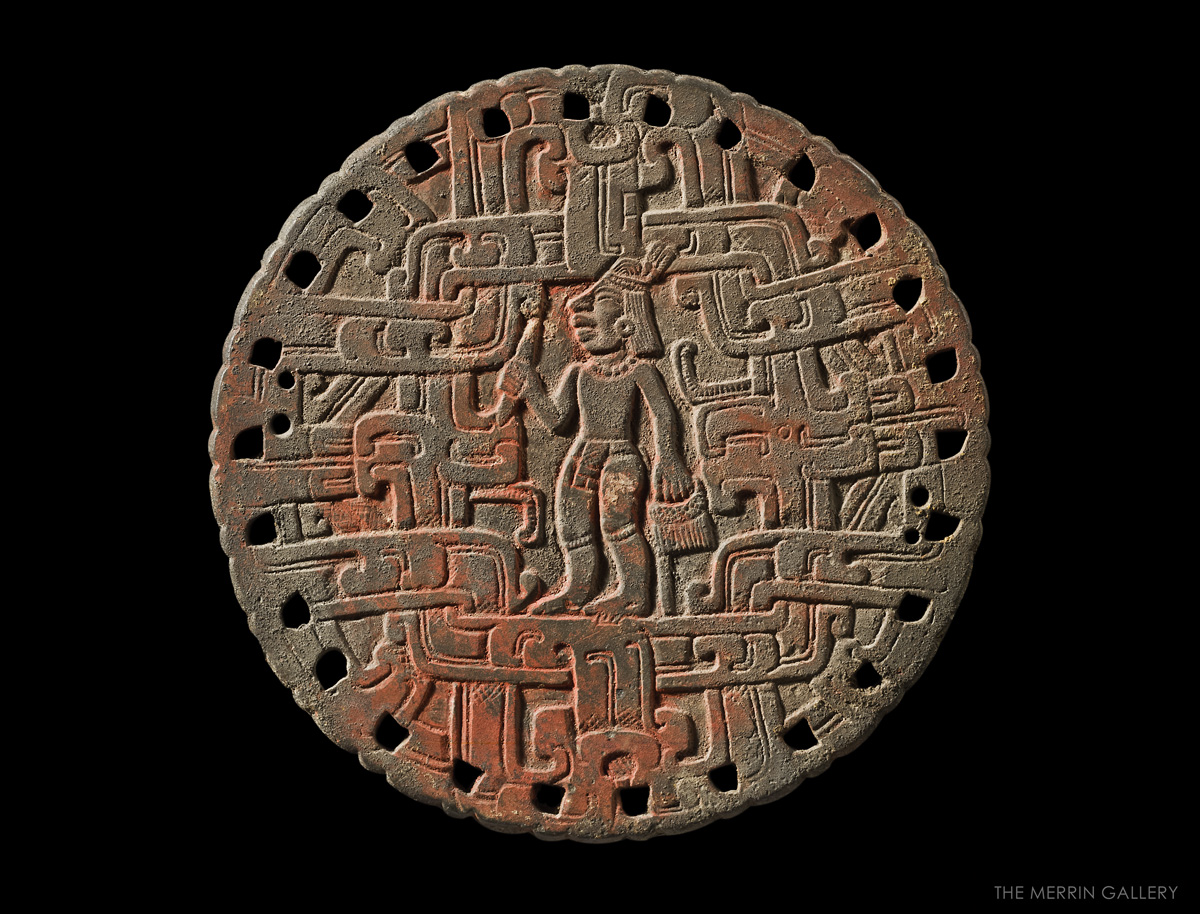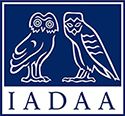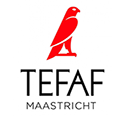Description
Carved in the shape of a circle, likely with the aid of a compass given its incredible symmetry, the mirror’s back is tinted red with cinnabar. Twenty-six pierced holes connected by short parallel bars embellish the outer rim of this mirror. Four additional holes have been pierced in the mirror as well. These smaller holes are set closely to their larger counterparts as a pair on either side of the piece; sitting directly across from each other, and at an angle to the line of the sculptural elements of the piece, they bisect the mirror neatly.
The center of the mirror back is occupied by the bas relief of a male figure with shoulder length hair: he is framed by a rectangular design. Scrollwork appears to weave under and over this border to create a tightly knit square in each of the four corners, and the central rectangle’s design flows outward to the remaining sides. Portrayed facing left the figure holds what appears to be a celt, likely made of jade, in one raised hand and a woven basket by its handle in the other. A headband with upright elements in the back of the head, the pan-Mesoamerican symbol of royalty, marks him as a noble or ruler. The figure wears also wears decorated maxolotl with embellished edge, ear flare, beaded necklace, and bands around both legs.
In the Pre-Columbian world mirrors were connected to a range of elemental, faunal, and supernatural motifs. Chief among these were water, the element that both gives life and serves as the earliest and most common reflective surface available to mankind, and divination. Shamans operated under the belief that the reflections seen in such surfaces as pyrite, obsidian, and water were actually another unreachable, and untouchable, realm of the gods through which other similarly unseen or untouchable things might be revealed. In addition to having been used as a divinatory object mirrors were often worn by shamans and rulers as part of ceremonial garb or costume, secured by the holes pierced along the edge. The red color on the front of the mirror was left by the oxidation of iron pyrite, a popular reflective medium in the Classic Period that was commonly fitted into larger mirrors such as this one as mosaic tiles.
MM




